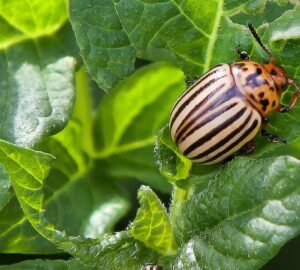Golden buttons, also known as tansy, is a fascinating and versatile plant with a rich history and several practical uses in the garden. In this article, we’ll explore its characteristics, growing conditions, benefits for gardeners, and some intriguing facts about this unique plant.
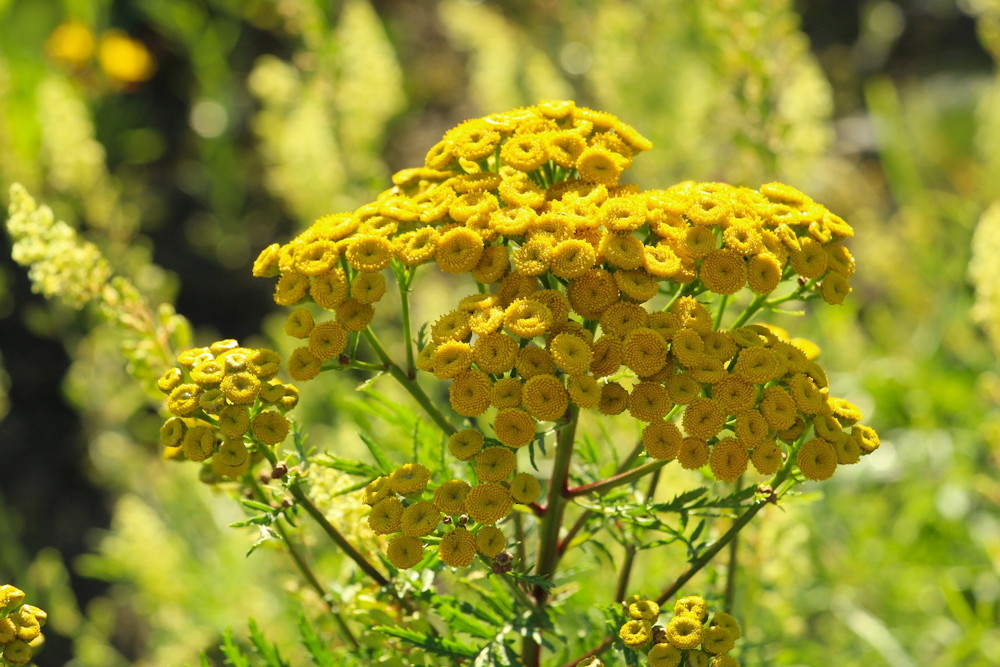
Golden buttons, scientifically known as Tanacetum vulgare, is a perennial herbaceous plant that’s been cherished for centuries for its vibrant yellow flowers, distinctive aroma and diverse uses. Native to Europe and Asia, this hardy plant has found its way into gardens worldwide, offering both aesthetic appeal and practical benefits. Let’s explore what makes this plant unique, how it can be used in your garden and some fascinating facts about its history and uses.
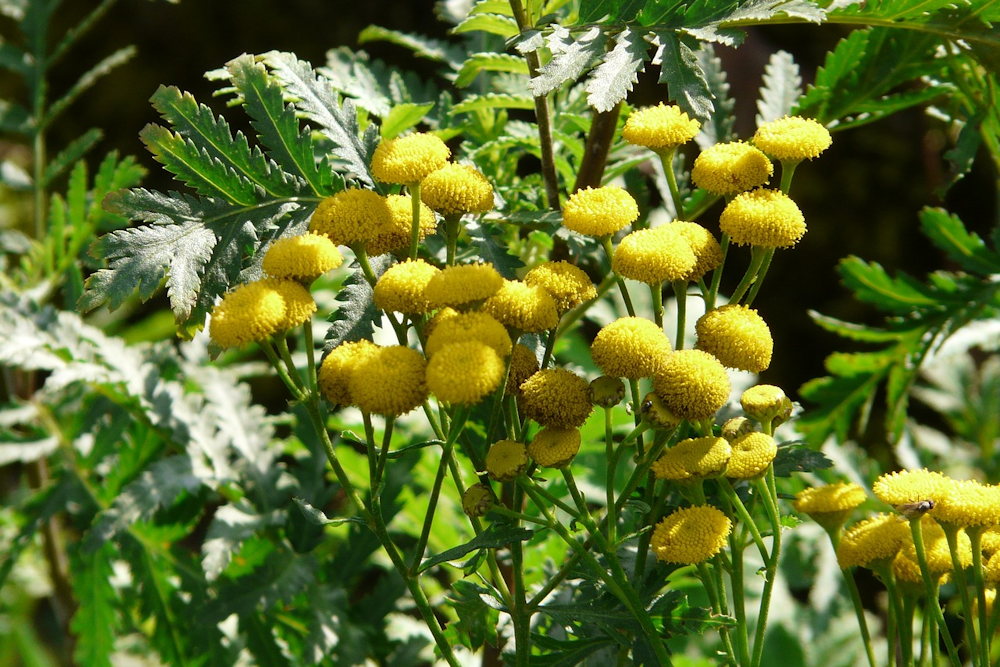
A Glimpse at the Golden Glory
Tansy is a hardy perennial that typically grows 90-120 cm (3-4 feet) tall, with feathery, deeply divided leaves that resemble those of ferns. The plant’s name, “golden buttons,” comes from its clusters of bright yellow, button-like flowers that bloom in late summer. These flowers are arranged in flat-topped clusters and can last for several weeks. Tansy has a strong, aromatic scent, often described as a mix of camphor and rosemary, making it a distinctive addition to any garden.
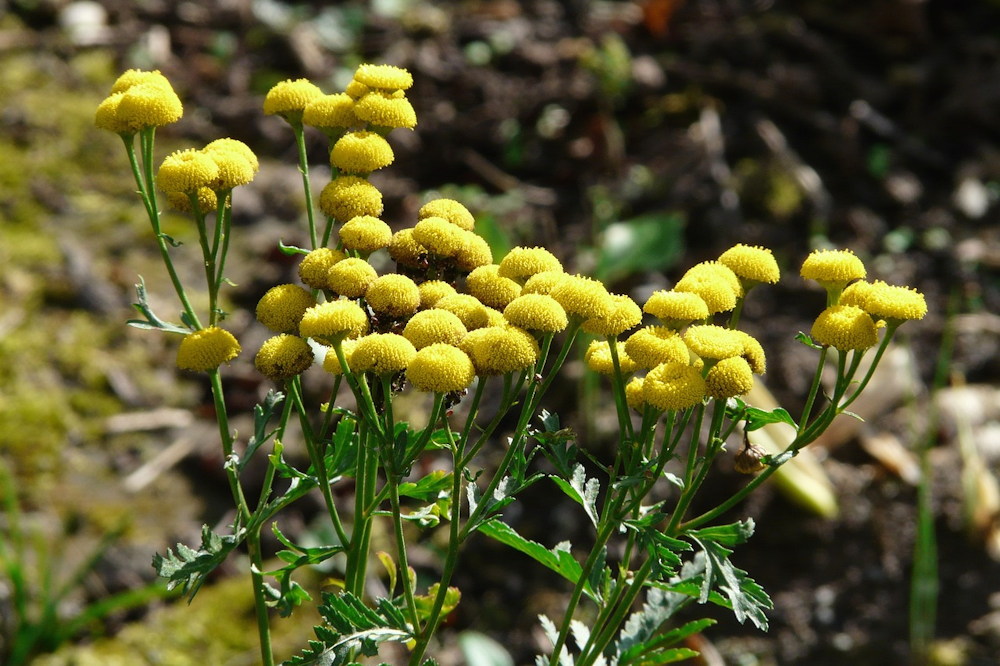
Home on the Range: Where Tansy Thrives
Tansy is native to Europe and Asia but has been widely naturalized in North America. It thrives in a variety of environments, from meadows to roadsides, and prefers well-drained soil with full sun exposure. Despite its adaptability, tansy can become invasive, so gardeners should monitor its growth and spread.
Although tansy is not a primary food source for bees and other pollinators, its bright flowers can attract a range of beneficial insects, including butterflies and certain types of wasps. These insects help with pollination and contribute to the plant’s overall ecological value.
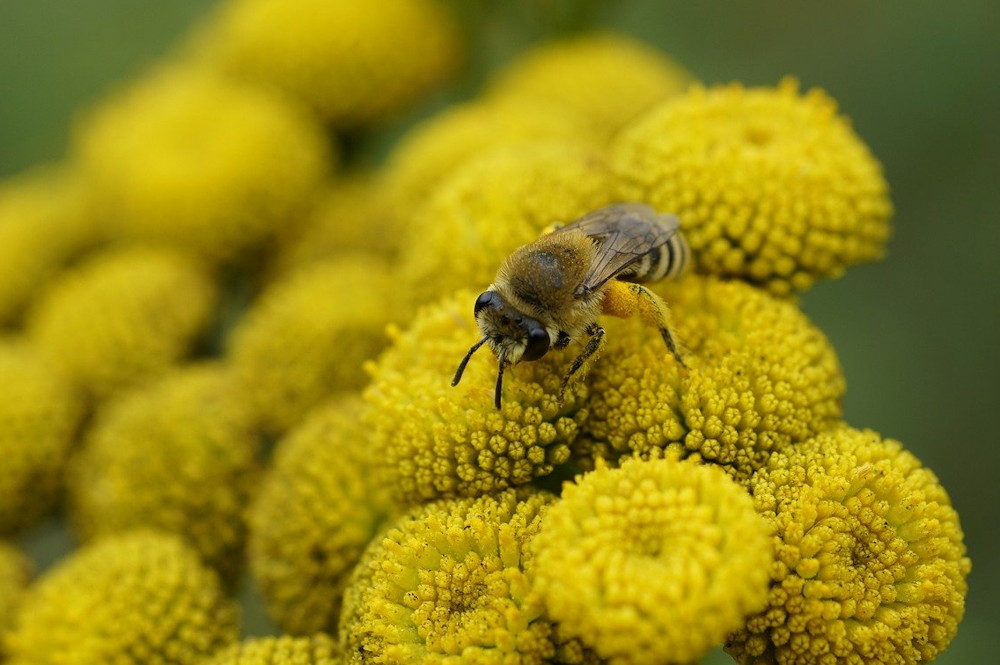
Pest Patrol: How Tansy Protects Your Garden
Tansy is known for its insect-repellent properties, making it an excellent choice for biological plant protection. It produces natural compounds that deter a variety of common garden pests, including ants, flies, mosquitoes, and even some species of beetles. By planting tansy strategically in your garden, you can create a natural barrier against these pests without resorting to harmful chemicals.
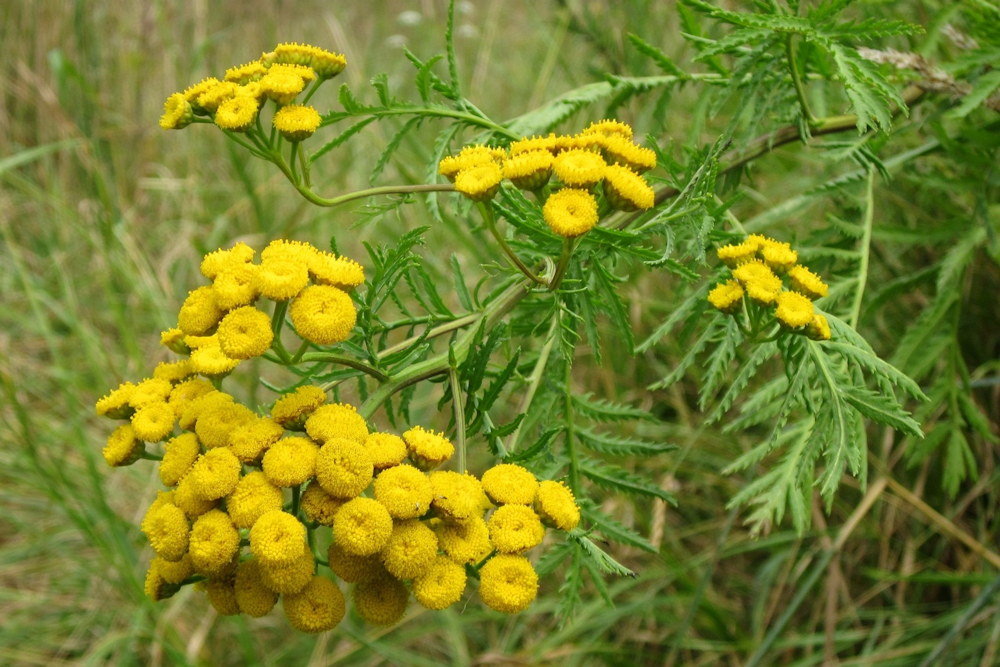
Where to Plant Tansy for Maximum Impact
To maximize the plant’s pest-repelling benefits, consider planting tansy near areas prone to insect infestations, such as vegetable gardens or flowerbeds. It can also be planted along garden borders or near outdoor seating areas to help keep mosquitoes and flies at bay. Because tansy can spread aggressively, planting it in containers or raised beds may be a good idea to control its growth.
Potatoes are often plagued by the Colorado potato beetle, a common pest that can decimate crops. By strategically planting tansy around your potato patch, you can create a natural barrier against these beetles. The strong aroma and natural compounds in tansy act as a deterrent, reducing the likelihood of infestation and helping protect your potato plants from damage without relying on chemical pesticides.
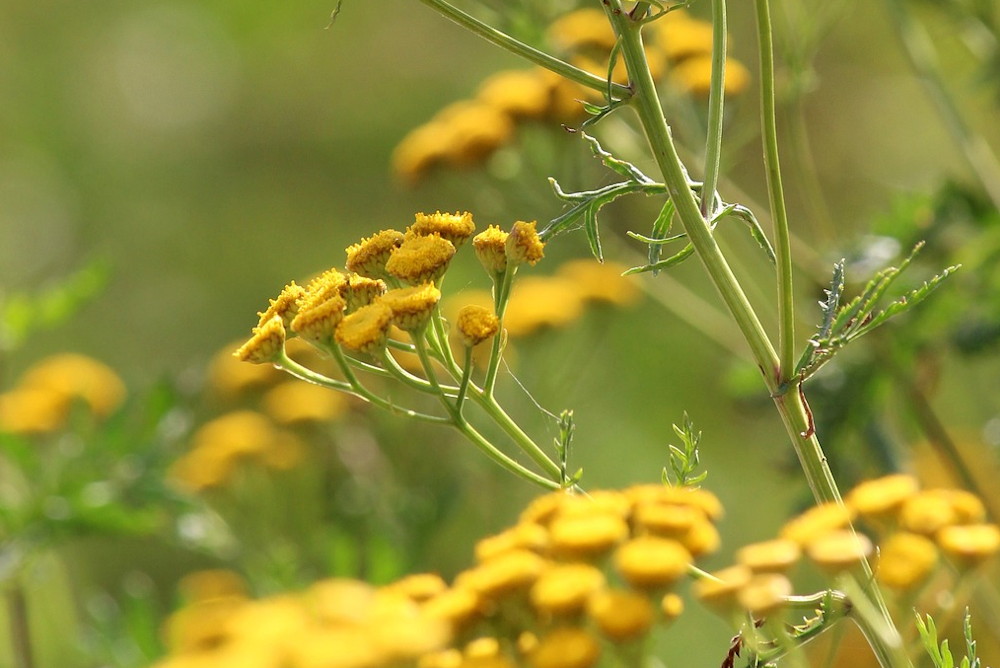
Fascinating Facts About Tansy
- Historical Uses: Tansy has a rich history of medicinal applications. In ancient times, it was used to treat various ailments, including digestive issues and fever. However, tansy contains thujone, a potentially toxic compound, so any medicinal use should be approached with caution and under professional guidance. Despite this, its historical significance adds a layer of intrigue to the plant’s story.
- Symbolism: In the language of flowers, tansy symbolizes resistance and immortality. This symbolism likely stems from its hardiness and ability to thrive in challenging conditions.
- Natural Dye: Tansy can be used to create a natural yellow dye, adding another dimension to its versatility in the garden.
- Culinary Uses: Historically, tansy was used in culinary applications, particularly in traditional British and Irish recipes. It was often added to cakes and puddings, though this practice has declined due to concerns about its toxicity.
- Companion Planting: Tansy’s insect-repellent properties make it a valuable companion plant. It is commonly planted alongside crops like potatoes, cucumbers and tomatoes to help deter pests.
- Environmental Impact: Because tansy is highly adaptable and can spread quickly, it can outcompete native plants in some regions. Gardeners should be mindful of this potential impact and manage its growth responsibly.
- Aromatic Characteristics: Tansy’s strong scent not only repels insects but also adds a unique aroma to the garden. Its camphor-like fragrance can be refreshing and invigorating.
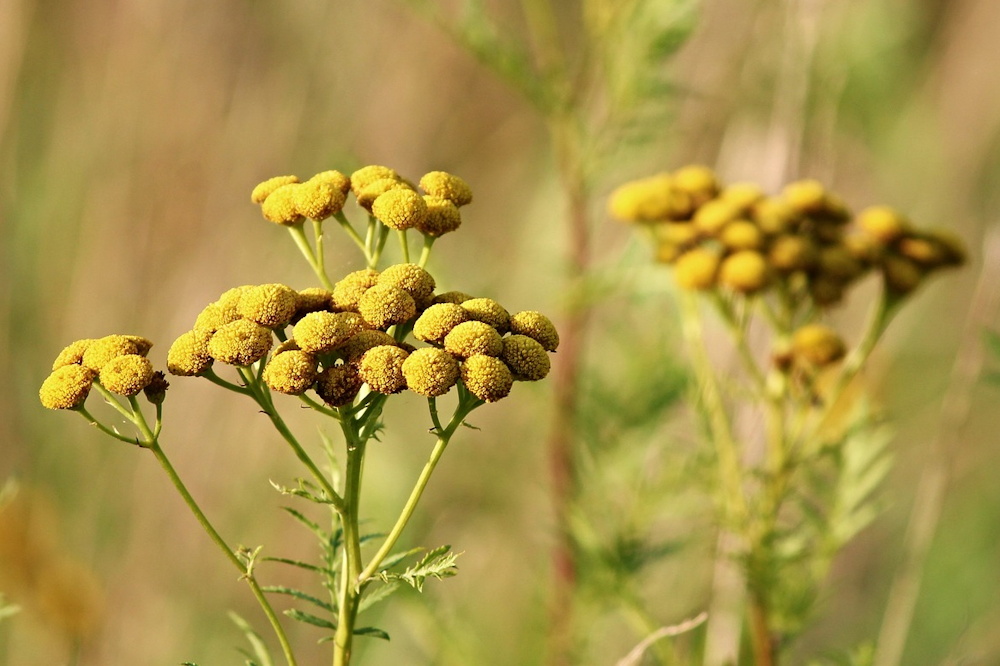
Tansy-Based Natural Pest Repellent
Ingredients
- 1 cup of fresh tansy leaves and flowers, chopped
- 2 cups of water
- 1 tablespoon of mild liquid soap (optional, for better adherence to plant surfaces)
Instructions
- Prepare the Tansy Infusion: Add the chopped tansy to a small pot and pour 2 cups of water over it. Bring the mixture to a boil, then reduce the heat and let it simmer for about 15-20 minutes. This allows the natural compounds in the tansy to infuse into the water.
- Cool and Strain: Remove the pot from heat and allow the infusion to cool completely. Once cool, strain the liquid through a fine-mesh strainer or cheesecloth into a clean container to remove plant material.
- Add Soap (Optional): If desired, add 1 tablespoon of mild liquid soap to the strained infusion. This helps the repellent stick to plant surfaces for a longer duration.
- Transfer to Spray Bottle: Pour the cooled and strained infusion into a spray bottle for easy application.
Usage
- Shake well before use.
- Spray the repellent on plants, focusing on areas where pests are commonly found.
- Reapply every few days, or after rain, for consistent protection.
Notes
- Always test the repellent on a small portion of the plant to ensure it doesn’t cause damage.
- While tansy can repel pests, it may not work on all types of insects. Experiment with other natural repellents if needed.
- Avoid using this repellent on edible plants that are close to harvest due to the presence of thujone, a potentially toxic compound.
Tansy, with its vibrant flowers and unique scent, offers a range of benefits for gardeners. Its insect-repellent properties, attractive blooms, and historical significance make it a plant worth exploring. Just remember to keep its invasive potential and toxicity in mind when planting, and you’ll have a delightful addition to your garden.









